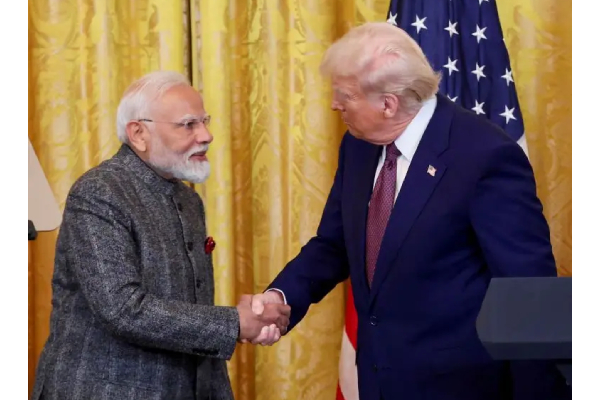The United States has announced a sharp increase in tariffs on Indian imports, raising the overall duty to 50% in response to India’s continued trade ties with Russia, particularly in the energy sector. The new tariff hike includes an additional 25% duty and will come into effect at 12:01 a.m. Eastern Daylight Time on August 27, 2025, according to a draft notice released by the U.S. Department of Homeland Security.
This move follows Executive Order 14329, signed earlier this month by President Donald Trump, which mandates federal agencies to act against what the administration describes as threats posed by Russia and its trade allies. The directive specifically targets countries that, in Washington’s view, support Russia’s actions through continued economic engagement. The Department of Homeland Security confirmed that the higher duties are being imposed on a wide range of Indian products, with the new rate applying to goods entering the U.S. for consumption or released from bonded warehouses after the stated deadline.
President Trump directly linked the decision to India’s ongoing purchase of Russian oil. Speaking earlier this month, he emphasized that such transactions help fund Moscow’s military operations in Ukraine. He also hinted at the possibility of further actions if diplomatic progress remains stalled. “That’s going to be up to them,” Trump said, referring to peace talks between Russian President Vladimir Putin and Ukrainian President Volodymyr Zelensky. “It takes two to tango, I always say, and they should meet.”
Impact on Andhra Pradesh
1) The tariff hike could have a direct impact on Andhra Pradesh’s export-driven industries, particularly those connected to textiles, seafood, pharmaceuticals, and agro-based products. The state, which operates key ports such as Visakhapatnam and Krishnapatnam, plays a major role in India’s trade with the United States.
2) Seafood Exports at Risk: Andhra Pradesh is one of the largest exporters of shrimp and other seafood products to the U.S. A 50% tariff could make these exports less competitive, potentially resulting in a decline in orders and affecting coastal economies and fisherfolk livelihoods.
3) Textile and Apparel Industry: The state’s growing textile clusters, especially in regions like Anantapur and Guntur, may face reduced demand from American buyers due to higher landed costs, threatening local employment and production.
4) Pharma Sector Pressure: Andhra Pradesh’s pharmaceutical manufacturing hubs may also feel the heat, especially smaller players relying heavily on U.S. markets for generic drugs and formulations.
Port and Logistics Disruption: With higher tariffs discouraging exports, there could be reduced cargo movement through the state’s ports, impacting revenues and related services in logistics, warehousing, and transport.
Overall, the tariff escalation adds uncertainty to Andhra Pradesh’s trade landscape and may prompt industries to explore alternative markets or seek government intervention to mitigate losses.

































